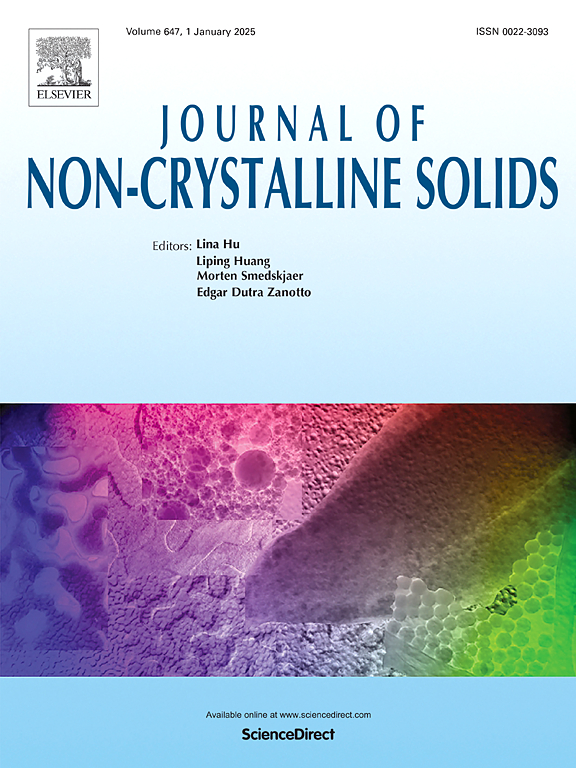银扩散成非晶硫化物驱动的光致表面金属半导体跃迁
IF 3.2
3区 材料科学
Q1 MATERIALS SCIENCE, CERAMICS
引用次数: 0
摘要
带隙光照射银/无定形硫族化物双层膜,使银向硫族化物层扩散。研究银的电子态和键构型是如何变化的,对于在微观尺度上理解银的光扩散是很重要的。在这项研究中,我们对Ag/非晶Ge20S80薄膜进行了光学反射率、x射线光电子能谱和扩展x射线吸收精细结构能谱测量,并研究了带隙照明下测量值的变化。结果表明,在光照下,Ag 5s离域电子引起的金属反射率丧失,费米能态的电子密度消失,表明表面金属-半导体跃迁。化学键的变化被清楚地观察到。Ag离子被S原子捕获,而不是被Ge原子捕获。随着光照时间的延长,S-S和Ge-S键断裂,Ag-S键形成。在此基础上,提出了银在微观尺度下的光扩散模型。本文章由计算机程序翻译,如有差异,请以英文原文为准。
Photo-induced surface metal-semiconductor transition driven by silver diffusion into amorphous chalcogenide
The bandgap light illumination of a Ag/ amorphous chalcogenide bilayer film causes Ag diffusion into the chalcogenide layer. Investigating how the electronic states and the bond configurations change is important to gain an understanding of Ag photo-diffusion on a microscopic scale. In this study, we perform the optical reflectivity, X-ray photoelectron spectroscopy, and extended X-ray absorption fine-structure spectroscopy measurements on Ag/ amorphous Ge20S80 films and examine the changes in measurements with bandgap illumination. The results showed that metallic reflectivity, which was caused by Ag 5s delocalized electrons, was lost and the electronic density of states at the Fermi energy disappeared upon light illumination, indicating a surface metal-semiconductor transition. Changes in the chemical bonds were clearly observed. The Ag ions were captured by the S atoms, but not by the Ge atoms. With increasing light-exposure time, both the S-S and Ge-S bonds break, and Ag-S bonds are formed. A model of the Ag photo-diffusion at the microscopic scale is proposed based on these experimental results.
求助全文
通过发布文献求助,成功后即可免费获取论文全文。
去求助
来源期刊

Journal of Non-crystalline Solids
工程技术-材料科学:硅酸盐
CiteScore
6.50
自引率
11.40%
发文量
576
审稿时长
35 days
期刊介绍:
The Journal of Non-Crystalline Solids publishes review articles, research papers, and Letters to the Editor on amorphous and glassy materials, including inorganic, organic, polymeric, hybrid and metallic systems. Papers on partially glassy materials, such as glass-ceramics and glass-matrix composites, and papers involving the liquid state are also included in so far as the properties of the liquid are relevant for the formation of the solid.
In all cases the papers must demonstrate both novelty and importance to the field, by way of significant advances in understanding or application of non-crystalline solids; in the case of Letters, a compelling case must also be made for expedited handling.
 求助内容:
求助内容: 应助结果提醒方式:
应助结果提醒方式:


